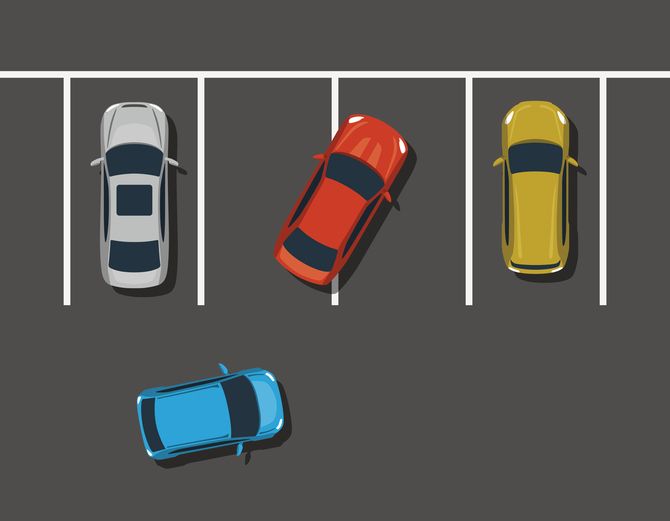UK Speed Limit Signs - A Comprehensive Guide

speed limit signs are indispensable tools for regulating traffic flow, enhancing road safety, and promoting responsible driving behavior among motorists. By understanding the significance, variations, and implications of these signs, drivers can contribute to the collective effort to create safer roads for everyone
Summary
In the United Kingdom, speed limit signs are ubiquitous features of the road network, serving as crucial indicators of the maximum speed at which vehicles are permitted to travel on specific stretches of road. Understanding these signs is not only essential for compliance with the law but also for ensuring road safety for all motorists, passengers, and pedestrians alike. In this comprehensive guide, we delve deep into the world of UK speed limit signs, unraveling their significance, variations, and implications for drivers.
The Importance of Speed Limit Signs
Speed limit signs play a pivotal role in regulating traffic flow and enhancing road safety. They serve as clear directives for drivers, informing them of the maximum speed at which they can safely travel on a particular road or in a specific area. By adhering to these speed limits, drivers can mitigate the risk of accidents, minimize the severity of collisions, and contribute to overall road safety.
Understanding Speed Limit Sign Variations
1. Standard Speed Limit Signs
The most common type of speed limit sign in the UK is the standard circular sign featuring a red border and black numerals indicating the maximum speed limit in miles per hour (mph). These signs are typically found on major roads, highways, and urban streets, providing clear guidance to drivers regarding permissible speeds.
2. Variable Speed Limit Signs
In recent years, the implementation of variable speed limit systems has become increasingly prevalent, especially on motorways and major arterial routes. These road signs, often displayed on gantries or electronic boards, allow authorities to adjust speed limits dynamically in response to changing traffic conditions, congestion levels, or adverse weather.
3. Temporary Speed Limit Signs
Temporary speed limit signs are deployed in various scenarios, such as roadworks, accidents, or special events, where temporary speed restrictions are necessary to ensure the safety of road users and construction workers. These signs are usually accompanied by additional warning signs to alert drivers to the presence of hazards or changes in road conditions.
Basic Speed Limit Signs
Applies to England, Scotland and Wales
In areas of street lighting (other than on motorways), a speed limit of 30 mph applies unless signs show otherwise. In Wales, this limit is 20 mph.

The maximum speed, in miles per hour, at which traffic may travel, if it is safe to do so.

The national speed limit for the type of road and class of traffic applies.

Road marking used in conjunction with upright signs to indicate the speed limit.

Entrance to a 20 mph zone in which traffic-calming measures may be encountered.

End of 20 mph zone and start of 30 mph speed limit.

Start of a speed limit at the boundary of a town or village.

Start of motorway regulations, including the national speed limit (unless a different speed limit is signed).

Point on a road with street lighting where an existing 30 mph limit originally ended but has subsequently been extended (temporary sign).

End of road works and any temporary speed limit through those works (may be supplemented by a sign indicating the permanent speed limit beyond the road works).

Area where speed cameras are in use.

Length of road where 2 cameras are used to measure the average speed of a vehicle between 2 points.

Reminder that enforcement cameras are in use (may be supplemented by a speed limit sign).

Speed camera nearby on a lit road with a 30 mph speed limit (i.e. where there are no speed limit repeater signs).

Speed camera nearby on an unlit road subject to the national speed limit (i.e. where there are no speed limit repeater signs).

Maximum speed advised, in miles per hour, at a bend (the plate may be used with other warning signs).

Minimum speed permitted, in miles per hour, unless it is impracticable or unsafe to comply.

End of minimum speed requirement.

Start of variable speed limit on a length of road where enforcement cameras are in use.

End of variable speed limit. The national speed limit for the type of road and class of traffic now applies.
Pass the theory test
This course has everything you need to pass your driving theory test first time. Includes licensed DVSA content.Decoding Speed Limit Signage
1. Interpretation of Numerals
The numerical values displayed on speed limit signs represent the maximum permissible speed in miles per hour (mph). It is imperative for drivers to understand and adhere to these limits to avoid potential penalties, fines, or legal consequences for speeding offenses.
2. Supplementary Signage
In addition to the numerical speed limit, speed limit signs may feature supplementary signage indicating specific conditions or exemptions. Common examples include advisory speed limits for sharp bends, school zones, or areas with high pedestrian activity, as well as exemptions for certain vehicle types or classes.
Compliance and Enforcement
1. Legal Obligations
Compliance with speed limit signs is not only a matter of road safety but also a legal requirement enforced by law enforcement agencies and traffic authorities. Failure to adhere to posted speed limits can result in fines, penalty points on driving licenses, or even prosecution for more severe offenses.
2. Speed Awareness and Education
To promote greater awareness and compliance with speed limits, educational campaigns and initiatives are often undertaken to inform drivers about the importance of responsible driving behavior, the consequences of speeding, and the benefits of adhering to posted speed limits for personal safety and community well-being.
Conclusion
In conclusion, speed limit signs are indispensable tools for regulating traffic flow, enhancing road safety, and promoting responsible driving behavior among motorists. By understanding the significance, variations, and implications of these signs, drivers can contribute to the collective effort to create safer roads for everyone.


